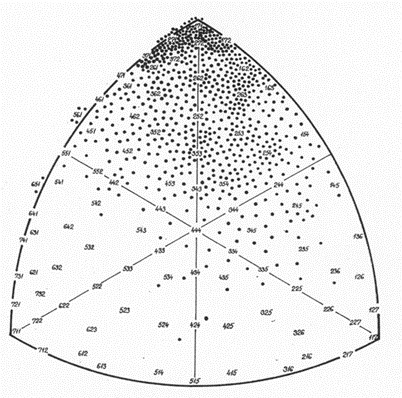Body composition
The third indicator of fitness and limiting factor of physical strain is body composition, which is given by the balance between the amount of fat tissue, muscle tissue and the remaining body tissues. An excessive amount of body fat has a negative impact on other components of physical fitness, especially on aerobic fitness (an overweight person has difficulty to move and gets faster into the anaerobic phase).
The contemporary population suffers from excessive weight (being overweight and obesity), which must be regulated. In the aerobic phase we burn sugars first (they usually suffice for 30 minutes of a more intensive physical activity), and later mainly fats. Therefore we can regulate body composition by a continuous strain of moderate intensity longer than 30 minutes (e.g. brisk walking, cycling, doing aerobics), and especially by intake with lower nutrition value than the output. The basic principle is: “Balance the energy in and out!”
Tab. 4: Approximate use of energy per hour
| Activity | kJ/h | kcal/h |
|---|---|---|
| sleep, relaxation in bed | 200–300 | 50–70 |
| sitting, mental work while seatedsed, mentální práce vsedě | 350–450 | 85–110 |
| standing | 400–500 | 95–120 |
| walking 1.6 km/h, typing, driving | 500–630 | 120–150 |
| walking 3.25 km/h, cycling 8 km/h, playing the piano, cleaning | 630–1000 | 150–240 |
| walking 4 km/h, cycling 10 km/h, volleyball, badminton, cleaning the windows | 1000–1250 | 240–300 |
| walking 5 km/h, cycling 13 km/h, table tennis and tennis, social dancing, painting, decorating | 1250–1500 | 300–360 |
| walking 5.6 km/h, cycling 16 km/h, slow swimming, skating 15 km/h, digging the garden, light shovelling | 1500–1750 | 360–415 |
| walking 8 km/h, cycling 17.5 km/h, chopping wood, folk dancing, moderate shovelling | 1750–2000 | 415–475 |
| jogging 8 km/h, cycling 19 km/h, basketball, digging a ditch | 2000–2500 | 475–595 |
| running 9 km/h, cross-country skiing 6.5 km/h, moderate intensity swimming | 2500–2800 | 595–665 |
| running faster than 10 km/h, cross-country skiing faster than 8 km/h, very intensive swimming, heavy shovelling | nad 2800 | Nad 665 |
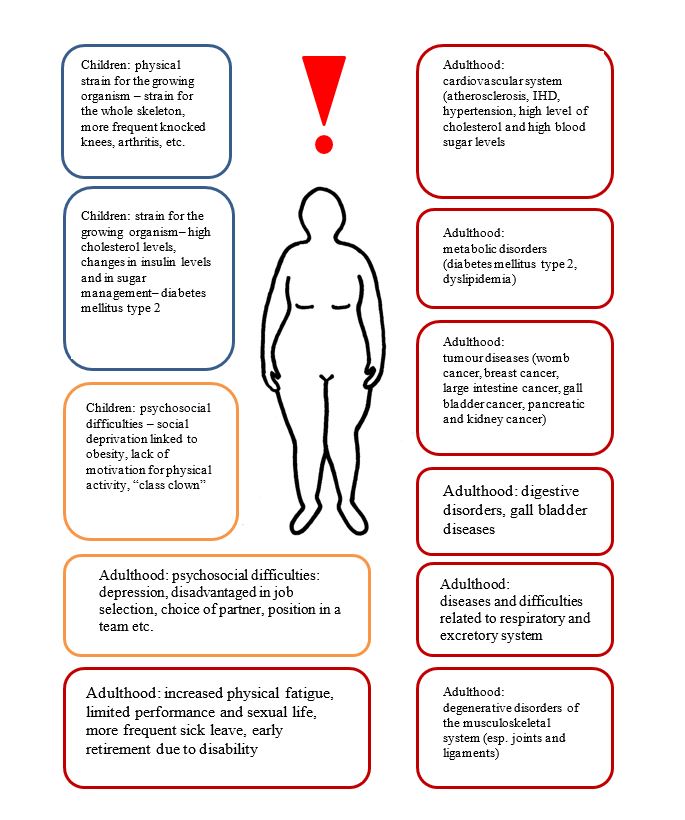
Methods in the evaluation of being overweight and obesity can be divided into two groups. In the first group there are laboratory methods, which provide exact results. The disadvantages of these methods are high demands on material conditions, complexity of execution and expert knowledge. The other group is represented by field methods, which are a lot easier but less precise.
The most frequently used of the field methods is Body Mass Index (BMI) expressed as a quotient of weight (in kilograms) and the second power of height (in metres).
BMI = weight (kg) / height (m2)
Even though BMI is currently the most frequently used method, it can sometimes be misleading, because the calculation does not take into consideration other factors (body composition, i.e. skeleton, muscle tissue, fat tissue, etc.). These differences in body composition in two people with the same BMI are shown in the picture (Fig. 4) and the table below (Tab. 5).
Tab. 5: Differences in body composition with the same BMI
| Body composition A | Body composition B | |
|---|---|---|
| Height | 178 cm | 178 cm |
| Weight | 87 kg | 87 kg |
| BMI | 27.5 | 27.5 |
| Amount of fat | 15 % | 24 % |
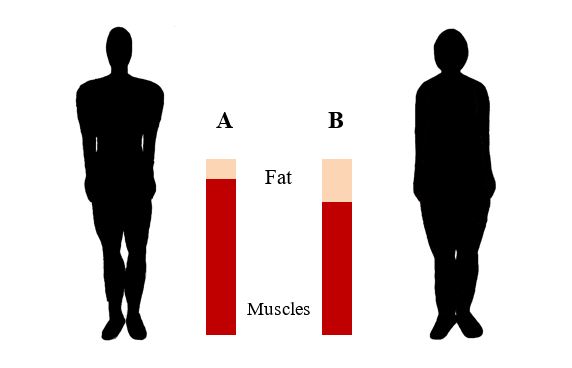
BMI provides only basic information about body composition, but to get a more detailed evaluation it is necessary to determine the proportion of fat in the total weight. This function is currently available through various digital scales and body composition analysers (e.g. Tanita, InBody and others). However, it needs to be operated by a specialist (physicist, anthropologist, etc.)
In the course of life BMI changes its values. The lowest BMI is at the end of the pre-school age and from that moment on it increases up to adulthood. BMI values used for children and adolescents differ from those used for adults (they are often labelled BMI-for-age). In children BMI above the 97th percentile of the norm is evaluated as obesity and BMI between the 90th – 97th percentile is evaluated as being overweight (Fig. 5).
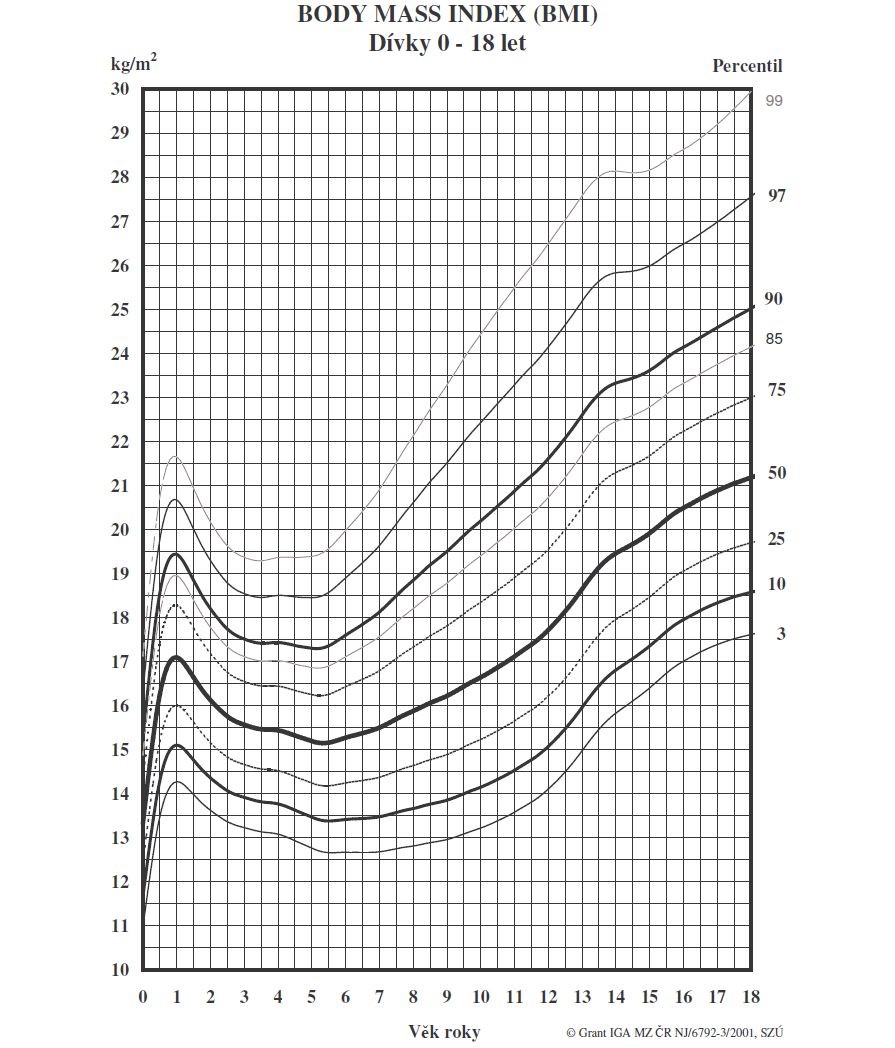
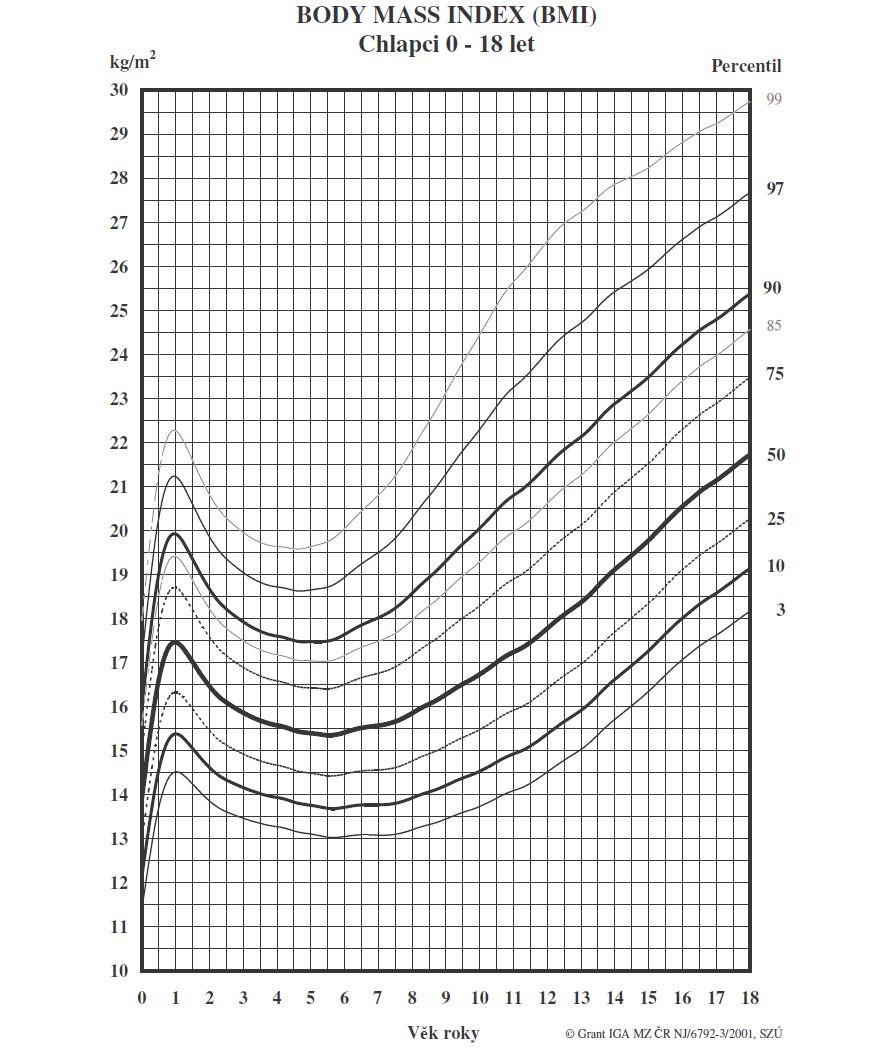
Another important aspect is also fat distribution. Experts distinguish android type (male, also called “apple type”) where fats are distributed in the area of the torso. This type is considered more dangerous regarding health than the gynoid type (female, also called “pear type”) where fat is stored in the area of buttocks and thighs (Fig. 6). Fat distribution shows significant hereditability of up to 60%. To identify the particular body type WHR index (waist – hips ratio) and waist measurement is used.
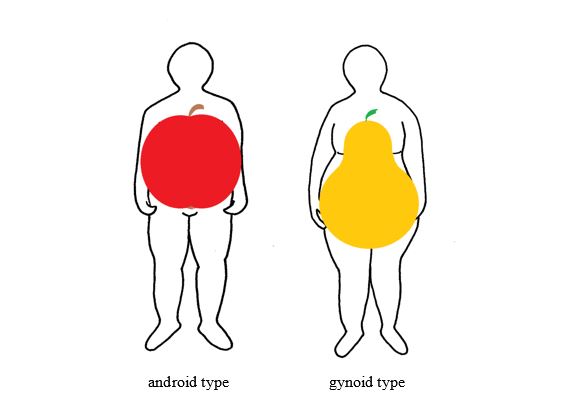
Somatotype
If two people of the same height stand next to each other, differences in the proportions of individual body segments can be noted. General physical appearance is based on height, weight, skeleton structure, muscles, fat tissue and other space parameters, which are to a great extent influenced by hereditability. A particular shape of human body is called a somatotype.
To identify one’s somatotype Sheldon’s typology, which is primarily designed for men, is now most frequently used. For the female population the same labelling of body types is used along with the specification of places where under skin fat is distributed. It is difficult to identify the somatotype in children, because they are still growing and their individual body parts and proportions are only being formed. Yet, we can often recognise at an early age in which direction the body is being formed.
Sheldon identified three extreme somatotypes – endomorph, mesomorph and ectomorph, whose characteristics are given in the table below (Tab. 6). Most of the population is a mix of types in which the individual somatotypes appear in various combinations.
Tab. 6: Basic characteristics of the somatotypes
| Somatotype – basic characteristics | ||
|---|---|---|
| Endomorph | Mesomorph | Ectomorph |
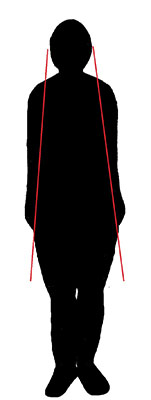
|
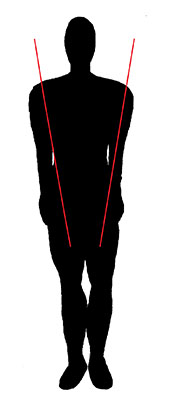
|

|
The exact somatotype can be determined only by a specialist (e.g. physician, anthropologist, specialist in physical education) based on measurements of body proportions. Based on calculations three basic numerical components are determined, which are then used to place the evaluated body in Sheldon’s somatotype chart (Fig. 7).
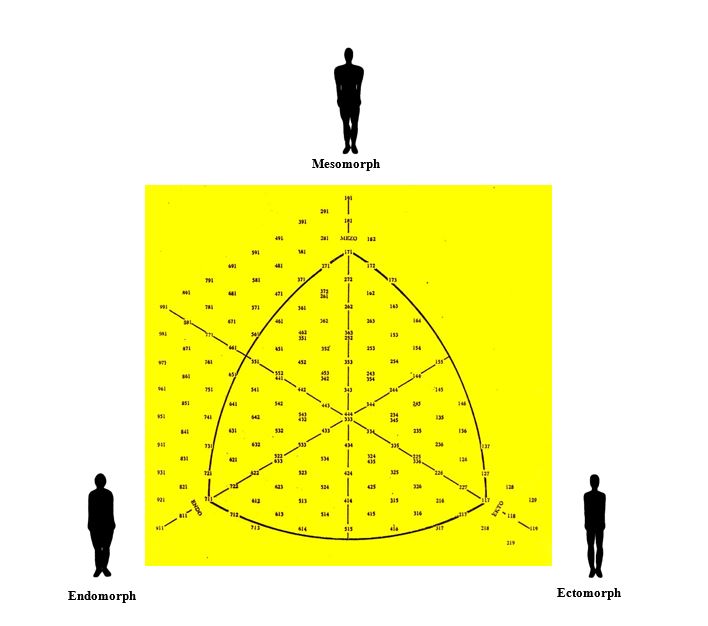
Even a simple optical estimation of the somatotype helps distinguish a person’s physical dispositions and regulate his physical activity. For the mesomorph type with their dominance of muscle tissue strength or strength and speed focused physical activities are well suited (sports games, gymnastics, etc.), for the ectomorph type endurance sports (long-distance running, cycling, etc.), for the endomorph type activities which do not put excessive strain on joints and do not require excessive strength (swimming, cycling, Nordic walking, etc.). The picture below (Fig. 8) clearly shows that the endomorph and partly also the ectomorph type are rarely suited to racing sports activities.
